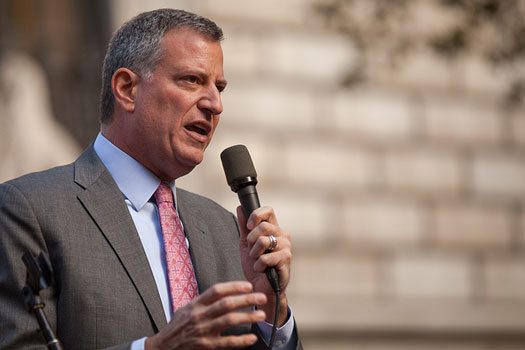
July 19, 2017; New York Times
For the past five years or so, NPQ has been covering reports about diversity in museums and cultural institutions. As with many other institutions, the profiles of leaders and boards can be very slow to change. But yesterday, reports Robin Pogrebin for the New York Times, New York City Mayor Bill de Blasio, in conjunction with the release of a 180-page report released yesterday called “CREATENYC: A Cultural Plan for All New Yorkers, declared that the city will link funding for its cultural institutions to the diversity of the employees and board members of those institutions.
This, explains the Times, “puts pressure on the Metropolitan Museum of Art, Carnegie Hall, the American Museum of Natural History and other pre-eminent institutions that are led largely by white male executives and power brokers from Wall Street, real estate and other industries.”
It is not clear whether the lack of diversity will institute barriers to funding on an immediate level, since de Blasio says that the first steps will be for the city to audit the makeup of the staffs and boards of cultural institutions and for those groups to then submit “meaningful goals” for their own diversity.
“This will be a factor in funding decisions by the city going forward,” de Blasio said. “We do this because we believe in fairness.”
Arts and culture, the freedom and strength of the cultural community, aligns directly to the strength of our democracy. And this is an important moment in history to remember that.
Commissioner of Cultural Affairs Tom Finkelpearl said yesterday that, “Today’s announcement requiring diversity reporting from city-funded groups is the next step, building on everything we’ve learned to date to work toward a cultural sector that is fairer, more equitable and looks like the city it serves.” However, as Pogrebin observed, “Arts groups are nevertheless likely to chafe at his budgetary conditions, particularly at a time when many depend on city dollars to help pay the bills.”
That might be a bit of an understatement. A good part of the cultural scene attached to the city’s large institutions is a competitive playground for the city’s elite, who pour millions into their favorites. David Freedlander, in an excellent and far-reaching article in ArtNews, writes that it’s no small potatoes here:
Sign up for our free newsletters
Subscribe to NPQ's newsletters to have our top stories delivered directly to your inbox.
By signing up, you agree to our privacy policy and terms of use, and to receive messages from NPQ and our partners.
New York City spends more on arts and culture than any other city in the United States—and more than any single state. The budget of the city’s Department of Cultural Affairs exceeds that of the National Endowment for the Arts and the National Endowment for the Humanities. The city has been funding the arts since the 19th century, but until now City Hall has never embarked on a comprehensive review of where all that money goes and what it does.
Some city officials, Pogrebin reports, seem to be anticipating a backlash. “There are people who will resist, who will resent, who will obstruct,” said Melissa Mark-Viverito, the City Council speaker. “Any moment for equality and inclusion doesn’t come easily.”
The Ford Foundation, which funded the research for the cultural plan, is itself focused intensely on issues of equity. Darren Walker, Ford’s president, says that the plan will naturally be disruptive.
“We should be celebrating that Staten Island will get more money for the arts,” Walker said. “Some part of this is going to be disruptive. That is a good thing, if it produces a fairer system.”
Diversity was emphasized throughout the cultural plan. A study conducted by the Cultural Affairs Department last year found that 67 percent of city residents identify as members of minorities, yet only 38 percent of employees at cultural organizations belong to those groups.
“The least-white jobs are maintenance and security,” Mr. Finkelpearl said, “and the whitest are curators. That points to some problems.”
Should the city’s major arts players feel uneasy? Only if they do not ever really mean to change up their games. “The report should be considered a clarion call to double down and reinvest in the arts and culture,” said Jimmy Van Bramer, majority leader of the City Council and chairman of its Cultural Affairs Committee.—Ruth McCambridge













